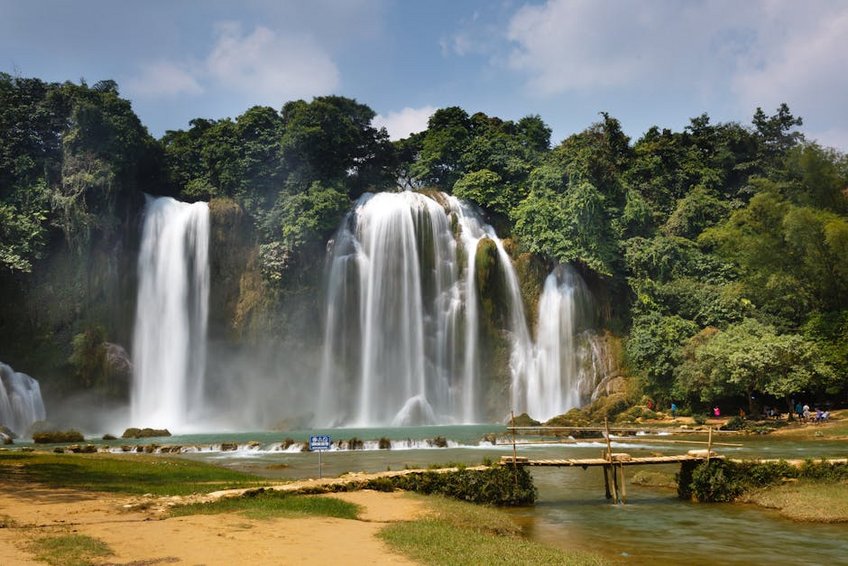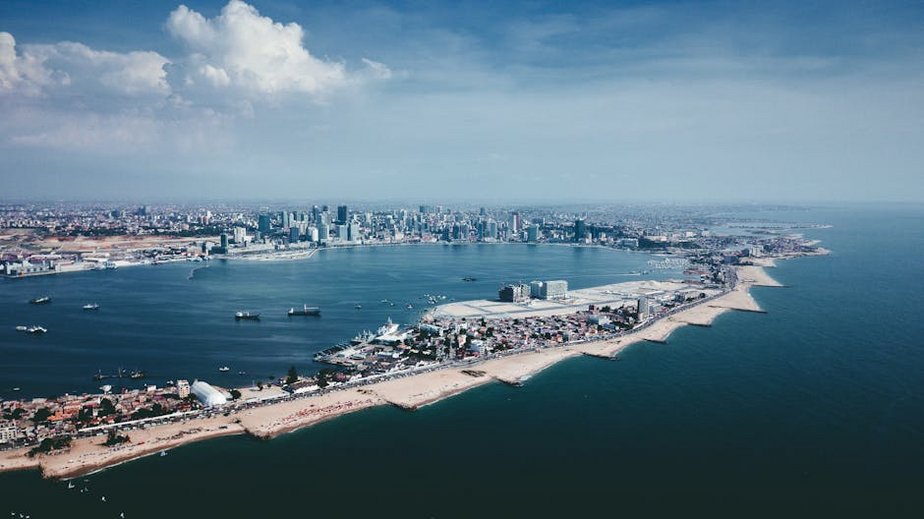Angola Kalandula Falls: Africa’s Spectacular Waterfall Adventure
Angola Kalandula Falls represents one of Africa’s most impressive natural wonders, cascading dramatically over 100 meters into a lush gorge surrounded by tropical rainforest. This majestic waterfall in Angola’s Malanje Province offers visitors breathtaking views, unique photography opportunities, and a chance to experience relatively untouched African wilderness. Our comprehensive guide provides essential planning tips, cultural insights, and practical advice for your visit to this remarkable destination.
Essential Kalandula Falls Information
Kalandula Falls ranks among Africa’s largest waterfalls by volume, located approximately 360 kilometers east of Angola’s capital, Luanda. The falls form part of the Lucala River system within Malanje Province, creating a powerful curtain of water nearly 400 meters wide during peak flow seasons. This natural spectacle remains less crowded than other African waterfalls, offering a more intimate wilderness experience for international travelers.
Geographical Location and Features
The waterfall’s geological formation dates back millions of years, carved through Precambrian rock formations that create its distinctive multi-tiered appearance. Surrounding the main cascade, visitors discover rich biodiversity including tropical bird species, monkeys, and unique plant life within the adjacent rainforest. The mist zone created by the falling water supports its own micro-ecosystem with specialized vegetation adapted to constant moisture.
Historical Significance and Name Origin
Kalandula’s name derives from local Kimbundu language traditions, reflecting the area’s cultural heritage among Angola’s indigenous communities. Portuguese explorers first documented the falls during colonial expeditions in the 19th century, though local tribes had long considered the site spiritually significant. Post-independence development has gradually improved access while preserving the waterfall’s natural grandeur and ecological importance.
Climate Patterns and Seasonal Variations
Angola’s tropical climate brings distinct wet and dry seasons that dramatically affect the waterfall’s appearance and accessibility. The rainy season from November through April transforms Kalandula into a thundering spectacle with maximum water volume, while the dry season from May to October offers better viewing conditions and easier access. Temperatures range from 68°F to 86°F (20°C to 30°C) year-round with higher humidity during rainy months.
- Waterfall height measures 105 meters (344 feet) with varying width up to 400 meters during peak flow periods between December and March.
- Access requires traveling from Luanda via the EN230 highway, approximately 5-6 hours by road with the final approach involving unpaved sections.
- Nearby accommodation includes basic guesthouses in Calandula town and more comfortable options in Malanje city about 80 kilometers from the waterfall site.
- Budget travelers should allocate $60-100 daily covering basic guesthouses, local meals, and shared transportation, with entrance fees to Kalandula Falls around $10 per person and additional costs for guided walks.
- Mid-range visitors can expect $120-200 per day including comfortable hotels in Malanje, private transfers, restaurant meals, and organized tours to the falls with knowledgeable local guides.
- Luxury experiences range from $250-400 daily featuring premium lodges, private vehicle with driver, fine dining, and exclusive photography tours with specialized equipment and expert instruction.
- Angola Ministry of Tourism
- Lonely Planet Angola Travel Guide

Alt: “kalandula-falls-angola-wide-view-water-cascade-rainforest”
Planning Your Angola Kalandula Falls Trip
Organizing your Angola Kalandula Falls adventure requires careful consideration of seasonal timing, transportation options, and necessary documentation for international visitors. The dry season from May to October provides optimal conditions for photography and exploration with reduced rainfall and clearer pathways. International travelers should secure Angolan visas in advance through embassies or the e-visa portal, processing typically taking 5-10 business days.
Budget planning should account for Angola’s relatively high costs compared to neighboring countries, with daily expenses ranging from $80-150 for budget-conscious travelers to $200-400 for more comfortable arrangements. Essential preparations include comprehensive travel insurance covering medical evacuation, vaccinations for yellow fever and malaria prophylaxis, and appropriate clothing for both waterfall mist and hot tropical conditions.
Best Time to Visit Kalandula Falls
Visit between June and September for ideal waterfall viewing conditions with manageable water volumes and minimal rainfall disruption. These months offer temperatures between 70°F and 82°F (21°C to 28°C) with lower humidity levels around 60-70%, creating comfortable exploration weather. Shoulder months in May and October provide decent conditions with fewer visitors, though occasional showers may occur.
The rainy season from November to April showcases the falls at their most powerful but presents accessibility challenges with muddy roads and limited visibility from heavy spray. December through February experiences the heaviest rainfall with temperatures reaching 86°F (30°C) and humidity levels exceeding 80%. Photography enthusiasts might prefer March-April when water volumes remain high but rainfall decreases slightly.
Budget Planning and Costs
Understanding cost components helps create realistic budgets for your Angolan waterfall adventure across different travel styles.
Essential Preparation Checklist
Pack waterproof clothing, sturdy hiking shoes with grip, quick-dry fabrics, and protective cases for electronics against the constant mist zone. Essential gear includes wide-angle lenses for landscape photography, polarizing filters to manage reflections, tripods for long exposures, and waterproof bags for equipment protection during boat tours.
Documentation requirements include a valid passport with six months remaining, Angolan tourist visa, international driving permit if renting vehicles, and comprehensive travel insurance covering adventure activities. Book accommodations 2-3 months in advance for peak season visits, confirm tour operators’ licenses, and download offline maps since cellular service remains unreliable near the waterfall area.
Top Attractions and Activities
Beyond the main waterfall viewpoint, the Kalandula area offers diverse experiences from rainforest exploration to cultural interactions with local communities. The surrounding landscape features numerous smaller cascades, natural pools perfect for swimming during drier months, and hiking trails through pristine woodland habitats. Local guides provide invaluable insights into the region’s ecology and history, enhancing your understanding of this unique destination.
Must-See Highlights
The primary viewing platform delivers spectacular panoramic vistas of the entire waterfall system, particularly dramatic during morning hours when sunlight creates brilliant rainbows in the mist. This accessible area requires minimal walking from the parking zone, making it suitable for visitors of all mobility levels. Visit between 7-9 AM for optimal lighting conditions and fewer crowds, with entrance fees approximately $10 per person.
Boat tours along the Lucala River provide unique perspectives of the falls from below, operating during drier months when water levels permit safe navigation. These 45-minute excursions cost $25-40 per person and depart from designated points downstream, offering unparalleled photography opportunities of the cascading water against the jungle backdrop. Advance booking proves essential during peak season from June to August.
Hidden Gems and Local Favorites
The upstream river sections feature several tranquil swimming holes and smaller cascades rarely visited by international tourists, accessible via moderate hiking trails from the main site. Local fishermen often frequent these areas and may share knowledge about the river’s ecosystem and traditional fishing methods. These spots provide excellent alternatives when the main viewpoint becomes crowded during weekend afternoons.
Nearby Pedras Negras archaeological site showcases ancient rock formations with historical significance to local communities, located approximately 15 kilometers from the waterfall. Local guides can arrange visits to this culturally important location, explaining the spiritual connections between the landscape and indigenous traditions. Combine this excursion with stops at traditional villages to experience authentic Angolan hospitality.
Adventure and Photography Opportunities
Serious photographers should plan multiple visits throughout the day to capture changing light conditions, with sunrise offering soft golden hues and midday providing bright, clear shots of the water dynamics. The rainforest surrounding the falls hosts excellent birdwatching opportunities with over 100 species documented, including colorful turacos and various kingfishers attracted to the river ecosystem.
Adventure seekers can explore hiking trails of varying difficulty levels, from gentle walks along the canyon rim to more challenging descents into the gorge below the falls. These routes reveal different waterfall perspectives and access to secluded areas perfect for meditation or quiet contemplation of nature’s power. Always hire local guides for off-trail exploration due to potentially hazardous terrain and changing weather conditions.
Practical Travel Information
Navigating Angola requires understanding the country’s infrastructure limitations while appreciating its natural beauty and cultural richness. Road conditions vary significantly between major highways and rural access routes, with the final approach to Kalandula Falls involving unpaved sections that become challenging during rainy periods. Accommodation options range from basic to comfortable, though luxury facilities remain limited outside major urban centers.
| Accommodation Type | Features and Location | Price Range (USD) |
|---|---|---|
| Budget Guesthouses | Basic rooms in Calandula town, shared bathrooms, local meals available, walking distance to falls viewpoint | $25-40 per night |
| Mid-Range Hotels | Private facilities in Malanje city, restaurant, pool, arranged transfers to falls (1-1.5 hours) | $70-120 per night |
| Luxury Lodges | Premium amenities near waterfall, guided activities included, gourmet dining, photography services | $180-300 per night |
| Camping Options | Designated areas with basic facilities, bring own equipment, spectacular sunrise views, permit required | $10-15 per person |


